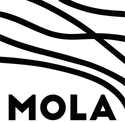The eastern cemetery of Roman London: excavations 1983-1990
Bruno Barber, David Bowsher, 2009. https://doi.org/10.5284/1000001. How to cite using this DOI
Data copyright © Museum of London Archaeology unless otherwise stated
This work is licensed under the ADS Terms of Use and Access.
Primary contact
David
Bowsher
Director of Research
Museum of London Archaeology
Mortimer Wheeler House
46 Eagle Wharf Road
London
N1 7ED
UK
Tel: 020 7410 2285
Resource identifiers
- ADS Collection: 921
- DOI:https://doi.org/10.5284/1000001
- How to cite using this DOI
Introduction
Archaeological excavations conducted between 1983 and 1990 at different sites within an area covering about 12ha in the modern London Borough of Tower Hamlets, to the east of the City of London, produced evidence for a large Roman cemetery. This cemetery was one of several serving Roman London, and lay immediately to the east of the town. During these excavations 136 cremation burials and 550 inhumation burials were recorded, together with a further 165 features identified as disturbed burials, but without surviving human remains. They were reasonably well dated from the 1st to the 5th century AD, although 3rd- to 4th-century burials were particularly well represented.
There was ample evidence for a variety of burial rites, as well as funerary structures, inscriptions, ditches and pits. Of particular importance, given the scarcity of published accounts of similar material from other British sites, was evidence for the deposition of residues from funeral pyres (although only one probable in-situ cremation is identified). Most inhumations were extended and supine, but 14 individuals were prone. The majority of inhumations (439) were buried in wooden coffins, although small numbers of inhumations were buried in other container types: 2 in lead coffins, 2 in wooden coffins bound with lead strips, and two in tile cists; 90 had no evidence for any sort of container present; 81 'chalk burials' were identified. At least 70 cremation burials were contained in an urn, and 2 in tile cists, and the remainder were unurned burials although evidence of an organic container occasionally survived. Secondary containers for the urns included amphorae (18), wooden boxes (7), and 1 tile cist. The osteology of the overall cemetery sample suggests that this was a homogenous group, implying that the people were born, raised and buried locally, although other types of evidence indicate that there were clear exceptions. As is common in Romano-British cemeteries, infants and females are significantly underrepresented.
The large assemblage of artefacts, animal bones and some plant remains catalogued were found either with the burials or redeposited in grave fills and surrounding strata. The latter deposits presumably were derived largely from previous burials that had been disturbed, but also provide some evidence for funerary practice and other activities carried out in the cemetery, including refuse disposal and (possibly) butchery. Minimum numbers of 137 inhumations and 33 cremations were accompanied by burial goods of varying types. Additionally, at least 65 cremation burials contained evidence for non-ceramic items burnt with the body on the pyre, notably including evidence for vegetable food remains. The survival of items burnt on the pyre in association with cremation burials clearly depended on the vagaries of preservation, and of the original collection of material for burial. The burial and pyre goods include items rarely found in the nearby settlement, and some which are rare or unique in the British archaeological record. Certain aspects of the cemetery, particularly the pyre residues and the animal and vegetable food offerings, seem at present to have more in common with continental cemeteries than British examples. This may prove to be a consequence of excavation techniques and survival; alternatively it may reflect the unique nature of London within Roman Britain.
The project was published following a joint venture between English Heritage and the Museum of London Archaeology Service:
Barber, B, and Bowsher, D, 2000 The Eastern Cemetery of Roman London: Excavations 1983-1990, MoLAS monograph 4
http://www.mola.org.uk/publications/
The digital dissemination of important parts of the digital archive was part of the English Heritage Rescue of Complete Archaeological Projects (RECAP) initiative.






